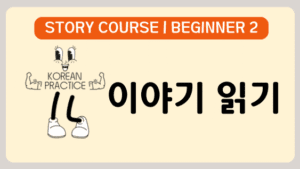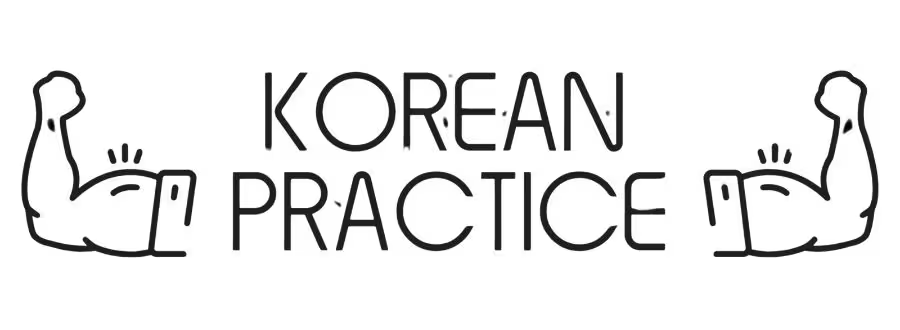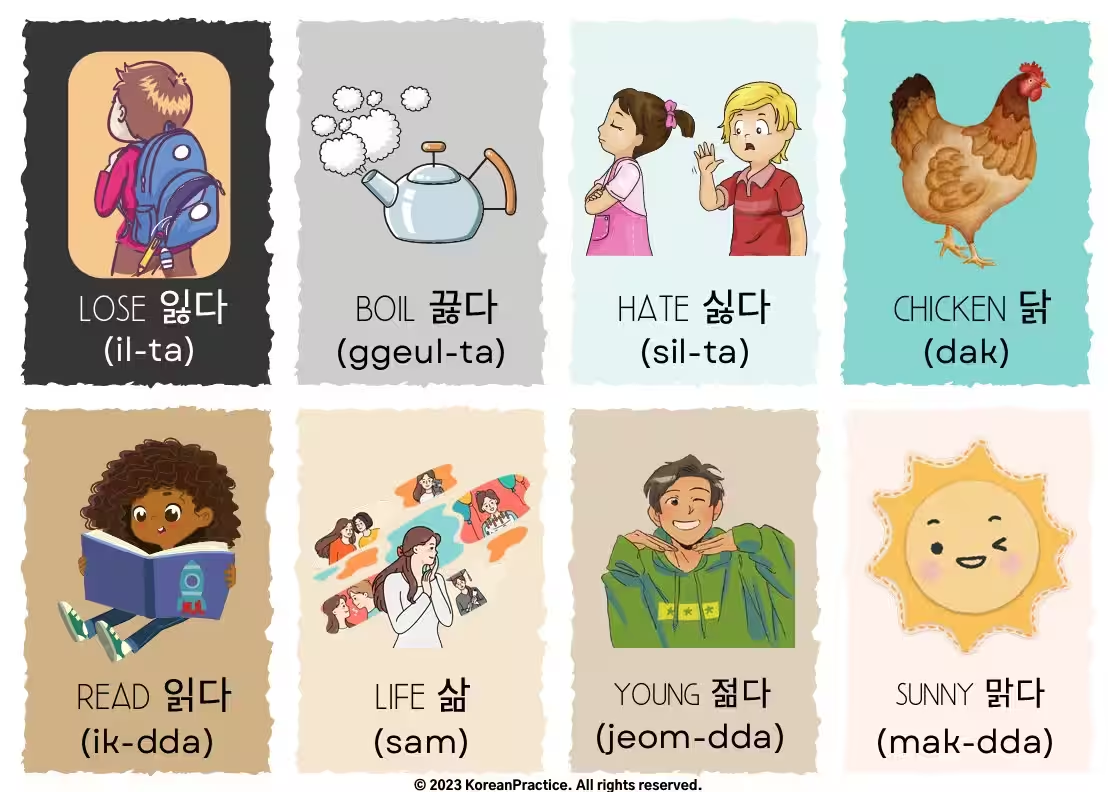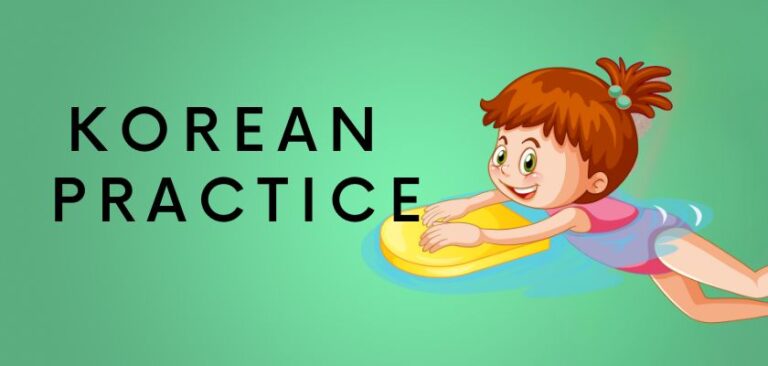Suh ChangWhoon
Written by 서 창훈, a certified Korean teacher with 14+ years of experience in Japan. He previously worked as a government officer, cybersecurity consultant, and English interpreter. Today, he teaches Korean in real classrooms without complex grammar explanations — instead, he trains students’ brains to speak naturally. His unique method is now the foundation of all his Korean courses.
Table of Contents
Why Korean Sentence Breakdown Is the Best Way to Learn Grammar
If you’re learning Korean and find sentence structure confusing, you’re not alone.
Many learners ask:
- How does Korean sentence structure work?
- Where can I find Korean sentence structure examples that are simple and clear?
- Is there a Korean sentence breakdown website that makes grammar easier?
These are exactly the questions this blog post is here to answer.
Unlike traditional methods, I teach grammar through sentence breakdowns — step-by-step explanations of real sentences from meaningful stories. This method helps you naturally understand how Korean sentence structure works, without memorizing grammar terms you’ll forget in a week.
Start the Free Course
Still wondering how to read Korean?

This isn’t just another beginner lesson. It’s a complete system designed to change the way you think about Korean — from struggling with letters to reading real sentences, understanding the language, and speaking out loud with confidence.
How This Blog Helps You Learn Korean Sentence Structure
Most grammar resources show you disconnected example sentences. But here, you’ll see Korean sentence breakdowns in full context — connected through story.
In this blog:
- You’ll see clear Korean sentence structure examples
- You’ll learn word-by-word what each part means
- You’ll get natural pronunciation guidance
- You’ll understand how to build your own Korean sentences
And the best part? You’re not just memorizing. You’re reading, understanding, and feeling the meaning through real sentence breakdowns.
Full Korean Story with Korean Sentence Breakdown
Below is a beginner (upper beginners)-friendly story with a full Korean sentence breakdown. This is perfect if you’re looking for Korean sentence structure examples or want to understand how Korean sentence structure works in real life. Each line is explained using my unique story-based method.
Example 1
Original Korean Sentence
현수는 공부를 좋아하지만, 운동을 싫어해요.
Pronunciation Guide
현수는 (hyeon-su-neun) 공부를 (gong-bu-reul) 조아하지만 (jo-a-ha-ji-man), 운동을 (un-dong-eul) 시러해요 (si-reo-hae-yo).
Meaning and Context
현수 (given name) 는 (I’m going to talk about hyunsu)
공부 (studying) 를 (my object is studying)
좋아하 (like) + 지만 (but)
운동 (exercise) 을 (my object is exercise)
싫어하 (to dislike) 해요 (I’m telling you polite and friendly)
Pronunciation Flow Tip
⊳ 하 changes to 해
싫어하 -> 싫어해
English Translation
Hyunsu likes studying, but he doesn’t like exercising.
Literal Translation
As for Hyunsu, (he) like studying but dislike exercising.
Example 2
Original Korean Sentence
그래서 엄마는 늘 아들이 걱정이었어요.
Pronunciation Guide
그래서 (geu-rae-seo) 엄마는 (eom-ma-neun) 늘 (neul) 아드리 (a-deu-ri) 걱쩡이엇써요 (geok-jjeong-i-eot-sseo-yo).
Meaning and Context
그래서 (so) 엄마 (mom) 는 (I’m going to talk about his mom) 늘 (always)
아들 (son) 이 (my subject is son)
걱정 (worry) 이었 (past tense; past of 이다)어요 (is; I’m telling you polite and friendly)
English Translation
So Mom was always worried about her son.
Literal Translation
So, as for Mom, always (her) son was worry.
Learn Korean Through Stories: Discover Why It Works Better Than Grammar Books

Start the Story Course
Looking for super easy way to learn Korean?

Most Korean courses stop at grammar. Mine goes beyond — with stories, Story Style Breakdown™, and real practice to help you speak.
Example 3
Original Korean Sentence
그래서 엄마는 아들에게 태권도를 배우게 했어요.
Pronunciation Guide
그래서 (geu-rae-seo) 엄마는 (eom-ma-neun) 아드레게 (a-deu-re-ge) 태꿘도를 (tae-kkwon-do-reul) 배우게 (bae-u-ge) 햇써요 (haet-sseo-yo).
Meaning and Context
그래서 (so) 엄마 (Mom) 는 (my topic is mom that I mentioned)
아들 (son) 에게 (to)
태권도 (taekwondo) 를 (my object is taekwondo)
배우 (to learn) 게 하다 (to make someone (learn))
했 (past tense) 어요 (I’m telling you polite and friendly)
Pronunciation Flow Tip
⊳ 하 changes to 해
배우게 하 -> 배우게 해
English Translation
So Mom made her son learn taekwondo.
Literal Translation
So Mom to son, made (him) learn taekwondo.
Example 4
Original Korean Sentence
그 다음, 농구를 배우게 했어요.
Pronunciation Guide
그 다음 (geu da-eum), 농구를 (nong-gu-reul) 배우게 (bae-u-ge) 햇써요 (haet-sseo-yo)
Meaning and Context
그 다음 (after that)
농구 (basketball) 를 (my object is basketball)
배우 (to learn) 게 하다 (to make someone (learn))
했 (past tense) 어요 (I’m telling you polite and friendly)
Pronunciation Flow Tip
⊳ 하 changes to 해
배우게 하 -> 배우게 해
English Translation
Next, (she) made (him) learn basketball.
Literal Translation
That next, (Mom) made (him) learn basketball.
Irregular Korean Verbs Made Easy: 5 Examples You’ll Actually Remember
- Most learners get confused by translations like that at first.
My course explains them with full, story-style breakdowns that finally make sense.
Example 5
Original Korean Sentence
또 그 다음, 수영을 시켰어요.
Pronunciation Guide
또 (tto) 그 다음 (geu da-eum), 수영을 (su-yeong-eul) 시켯써요 (si-kyeot-sseo-yo)
Meaning and Context
또 (again)
그 다음 (after that)
수영 (swimming) 을 (my object is swimming)
시키 (to make someone do something) 었 (past tense) 어요 (I’m telling you polite and friendly)
Pronunciation Flow Tip
⊳ 시키 + 었어요 = 시켰어요
Rapidly pronouncing ‘키’ and ‘었 results in ‘켰’.
English Translation
And then, she made him swim.
Literal Translation
Again that next, (Mom) made (him) learn swim.
Still Struggling With Korean Grammar? Here’s What You Might Be Missing
How Does Korean Sentence Structure Work?
Korean follows a Subject-Object-Verb (SOV) structure, unlike English which uses Subject-Verb-Object (SVO). For example:
- English: I eat an apple.
- Korean: I an apple eat. → 나는 사과를 먹어요.
That’s why Korean sentence breakdowns are so helpful. They show you exactly how the sentence is built — so you can understand Korean from the inside out.
The more you read stories broken down like this, the faster your brain adapts to Korean sentence structure.
Korean Reading Practice That Works: 4 Proven Ways to Improve Fast
Want More Korean Sentence Structure Examples?
Every story on this blog comes with a full Korean sentence breakdown — perfect for beginners who want more than vocabulary lists. If you enjoy this method, be sure to check out our other posts, where we explore Korean grammar, expressions, and even cultural tips — all through story.
Whether you’re searching for:
- Beginner-friendly Korean sentence structure examples
- A Korean sentence breakdown website that explains things clearly
- Or just a way to make Korean fun again…
You’re in the right place.
Learn Korean Effectively: 4 Strategies That Actually Help You Practice
From My Original Story Style Breakdown™ — A New Way to Truly Understand Korean
This is just one sentence from a complete learning system you won’t find anywhere else. — designed to help you understand Korean naturally, without getting lost in grammar rules.
When you can truly understand Korean sentences this way, speaking becomes much easier.
🚀 Quick Learning

Original Korean Sentence
사자가 코끼리를 잡아요.
Pronunciation Guide
사자가 (sa-ja-ga) 코끼리를 (ko-ggi-ri-reul) 자바요 (ja-ba-yo).
English Translation
The lion catches the elephant.
Literal Translation
Lion catch elephant.
Quick Reference
사자가 (lion) 코끼리를 (elephant) 잡아요 (catch).
💡 Need more details? Click “Deep Learning” below!
🔍 Deep Learning
Meaning and Context
사자 (lion)
→ The lion — the one taking action now in the story.
가 (subject marker)
→ Points out that the lion is doing the action.
코끼리 (elephant)
→ The one the action is done to.
를 (object marker)
→ Shows that the elephant is the object being caught.
잡 (to catch, grab, take)
→ The action — the lion catches or grabs the elephant.
아요 (polite ending)
→ I’m telling you this in a polite and friendly way.
Real-Life Usage
잡아요 is common when talking about catching or holding something.
Pattern Practice
1. 사자가 토끼를 잡아요.
2. 고양이가 쥐를 잡아요.
3. 아이가 공을 잡아요.
4. 강아지가 공을 잡았어요.
Free Korean Flashcard
FAQs (What You Might Still Wonder About)
1. ❓ What is a Korean sentence breakdown?
It is a step-by-step explanation of each part of a Korean sentence. It includes grammar, vocabulary, pronunciation tips, and translations to help learners understand how Korean sentence structure works.
2. ❓ Why is Korean sentence structure so different from English?
Korean sentence structure follows a Subject–Object–Verb (SOV) order, while English uses Subject–Verb–Object (SVO). This means the verb comes at the end in Korean. Breaking down Korean sentences helps learners adjust to this structure more easily.
3. ❓ Where can I find Korean sentence breakdown examples?
You can find Korean sentence structure examples in this blog, on my YouTube channel, and inside my full course. Each one includes natural Korean sentences broken down using my Story-Style Breakdown™ method.
4. ❓ How does the Story-Style Breakdown™ method help with Korean grammar?
Instead of teaching isolated grammar rules, the Story-Style Breakdown™ method explains grammar through real, meaningful sentences from stories. This makes it easier to understand Korean grammar in context and remember how to use it.
5. ❓ Is there a website that focuses on Korean sentence breakdowns?
Yes! KoreanPractice.com offers free flashcards, YouTube videos, and full Korean courses based on sentence breakdowns. It’s designed for beginners who want to learn Korean naturally through stories and simple explanations.
6. ❓ Can I learn Korean sentence structure without memorizing grammar rules?
Absolutely. Many learners struggle with memorization. That’s why learning Korean through sentence breakdowns and story-based examples is so effective. You get to see grammar and structure in action, without needing to memorize long grammar lists.
10 Heartwarming Korean Phrases to Say I Love You (With Real Examples)
Final Thoughts: Learn Korean Through Stories, Not Stress
If you’re struggling with Korean sentence structure, you’re not alone. Many beginners find it confusing at first—especially when trying to understand how Subject–Object–Verb order works. That’s why breaking down real sentences through stories is one of the best ways to learn.
This blog gave you a small taste of what a full Korean sentence breakdown looks like. Using Korean sentence structure examples from actual story content helps you see grammar and vocabulary in action—not just in theory. It’s also much more engaging than memorizing grammar tables.
If you’re wondering how does Korean sentence structure work in everyday language, the answer lies in context and repetition. And that’s exactly what the Story-Style Breakdown™ method is built for: helping you absorb grammar naturally through stories you enjoy.
Ready to go deeper? Check out my Korean sentence breakdown website for free resources, flashcards, and courses that make Korean easier than ever.
Use this virtual Korean keyboard to type Hangul without needing a Korean-installed keyboard layout.
Use this virtual Korean keyboard to type Hangul without needing a Korean-installed keyboard layout.







